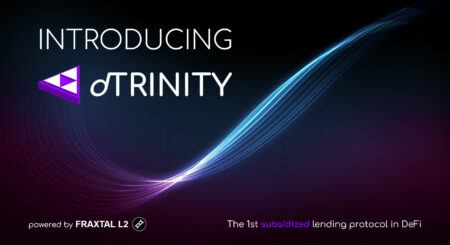Donald McIntyre, one of the most active communication coordinators in the Ethereum Classic (ETC) community, has drawn some interesting comparisons between ETC and Ethereum (ETH), the world’s largest platform for building decentralized applications (dApps).
Comparing Ethereum and Ethereum Classic
McIntyre, a former Business Development Manager at ETCDEV, a leading organization which is focused on the ongoing development of Ethereum Classic (but was forced to shut down due to lack of funding), told CryptoGlobe:
A useful analogy is to see ETH as a sports car and ETC is an armoured vehicle. The problem is to think that ETH can be an armoured vehicle and ETC can be a sports car. ETH is about scaling and performance and ETC is about high value and security.
McIntyre, who also previously served as Senior VP at Morgan Stanley and VP at UBS, explained: “ETH and ETC have different functions in the blockchain industry stack. ETC will be a highly secure base chain, perfectly suitable for decentralized computing and high value smart contracts between people and businesses, while ETH is aiming to be a high speed and high volume transactions layer to satisfy high performance applications.”
“ETC Could Provide Security Services to ETH”
McIntyre added: “In that context, ETC could even provide security services to high performance networks such as ETH. I think it would be a big advantage for both ecosystems (ETH and ETC) to analyze that possibility as it would likely minimize, in the context of a standards war, which means that only few networks will survive in the future, the threat of alternative ETH compatible chains such as EOS, Tezos, Cardano, and others.”
Commenting on the unique features of Ethereum Classic, McIntyre remarked: “When ETH finally moves to ETH 2.0, which is a proof-of-stake (PoS) based system with database fragmentation, in the form of sharding, and variable monetary policy, ETC will be the only non-fragmented, fixed monetary policy, (proof-of-work) PoW and Turing complete blockchain. That is an extremely valuable niche in the industry that will be increasingly appreciated in the next few years as the layer 1 (L1) vs layer (L2) and security vs performance segmentations become more evident for market participants.”
When asked about the main challenges Ethereum Classic faces as a platform, McIntyre noted: “On the technical side, ETC as a platform is not facing major challenges as I see the ECIP (Ethereum Classic Improvement Proposal) upgrades pipeline is advancing smoothly. For example, the Atlantis hard fork on block 8,750,000, which integrates ETH’s Spurious Dragon and Byzantium upgrades, will likely be deployed and activated by mid September 2019, and the Agharta hard fork on block 9,200,000, which integrates ETH’s Constantinople and St.Petersburg upgrades, is under technical analysis, but has minor observations that are being ironed out.”
McIntyre continued:
On the marketing side, I do observe ETC, for historical reasons, has a lower profile and less top-of-mind awareness, so communications about its true state and advancement is always more difficult and costly to convey. The fact that ETH and EOS and the others have billions of dollars to spend on this, is of course a factor as well. However, there are several volunteers, professionals and entities in the ecosystem working on more and more effective communication, such as the ETC Cooperative, IOHK, ETC labs, Christian Seberino, Kevin Lord, myself and others.
“DPoS Ledgers Are Not Blockchains”
When asked to comment on Daniel Larimer’s (the CTO at Block.one and technical lead for the EOS project) statements that delegated proof of stake (DPoS) is more scalable and compatible with future technologies, McIntyre noted: “No matter how many gimmicks PoS distributed ledgers such as EOS invent, they are just that: distributed ledgers. Those are not blockchains, they just make blocks to mimic the authority and perceived security of Bitcoin and Ethereum Classic, but they are no better than normal Byzantine Fault Tolerant and subjectiveness dependant networks.”
He added: “Their security is up to 1/3 fault tolerance and nothing more. I would say that the fact they designate stakers or, even worse, a few privileged nodes to be ‘master nodes’ reduces security further, because the consensus has to be reached only between that subset of a few players, and the rest of the nodes become just followers of their decisions instead of true validators.”
McIntyre further mentioned:
For a system as centralized and subjectively directed as EOS to say that it is ‘scalable’ and ‘compatible’ with future technologies is not only a truism, but a stupid truism. This is because it is actually a very inefficient centralized and cumbersome distributed ledger, when AWS, Microsoft Azure, IBM Cloud, Google Cloud are equally centralized, but less bureaucratic and much more efficient and secure by trusted third party standards.
According to McIntyre: “From a business strategy perspective, EOS is ‘stuck in the middle.’ This means it is not trust minimized as Bitcoin and ETC, but it is not as efficient as AWS or Azure and the other cloud services. Therefore, EOS is a dead end for all intents and purposes.”
In response to Larimer’s statements that PoW is not a future-compatible protocol, because we cannot create a new chain with the same network effect as BTC and ETH, McIntyre stated: “That is the false argument that assumes that high computing power is the only security feature of blockchains that use PoW. It also shows why Larimer would use PoS and copy features of democracy such as ‘delegated-proof-of-stake’ and voting, because he ignores the security model of PoW chains, and thus ignores that EOS is a significantly inferior system in terms of security, and not competitive even in the performance segment, as I mentioned above.”
McIntyre further mentioned: “To illustrate, proof of work blockchains security features include, but are not limited to:
• Consensus & transaction ordering with 1/2 fault tolerance, which is not achievable by PoS.
• Sybil resistance is much stronger in PoW, with most accumulated work fork choice, than the subjective model of PoS.
• Accumulated work means that the work done by the miners since genesis is accumulated, making it practically impossible to reverse the chain, even with all the hash power in the
network. In PoS, 1/3+ of stakers can reverse to genesis in seconds.
• Unforgeable costliness means the coin is extremely costly to create, thus very difficult to forge.
Also, that cost sets a proxy for its value in the economy. In PoS, creating the coins has no cost.
• The above unforgeable costliness also creates a fallback in case the fee model doesn’t work (which is unlikely) or the social layer goes rogue with monetary policy.
• Broadcast and replication among all full nodes who are true validators, not like PoS, where the only validators are stakers (or ‘master nodes’ in EOS).
• Miner-client division of power, related to the previous point, also means that PoW miners only build blocks, but those blocks are worthless if not validated by full nodes; this divides the power in the chain and renders no particular participant all powerful, even with 1/2+ computing power.
In PoS, such division of power does not exist, rendering 1/3+ of stakers (note this is a subset of the subset) as the only group that controls everything in the distributed ledger.
All of the above means that whether there are several proof of work chains and some are larger than others or if they even share the same mining algo, does not mean they are less secure. It only means that the smaller chain users have to use more confirmations for larger transactions as they may be vulnerable to double spends, which is in itself a local, non-systemic attack vector in PoW public blockchains. In fact, ETC is proof of this.”
“Impossible for Me to Know What’ll Happen in Next Few Years”
When asked what he thinks the crypto landscape will look like next year, and maybe two years from now, and what potential role ETC will play in that, McIntyre said: “It is impossible for me to know what will happen in the next year or two, but what I expressed above indicates that the whole industry will eventually reorganize itself in layers: L1 being the most secure, low performance, high value layer; L2 being the high performance, high volume, and lower transaction value layer; and other systems on top that may constitute the applications layer, such as Lightning Network, Plasma, Raiden, Liquid, other sidechains and others.
He added:
If ETH, EOS, Cardano, Tezos and other PoS networks actually acknowledge their true nature, they would stop trying to compete at the base layer, and assume their position as layer 2 systems that would use the security services of the base layer as I described in the first question.









